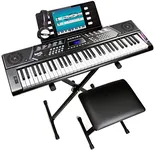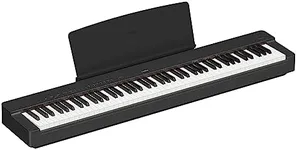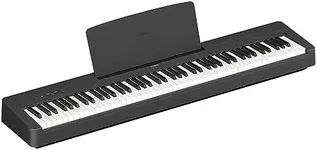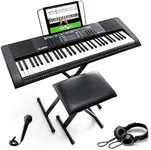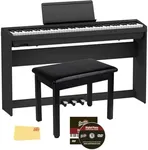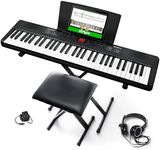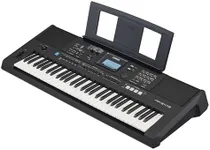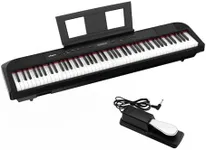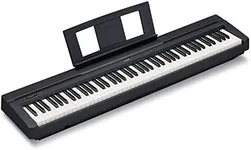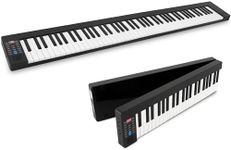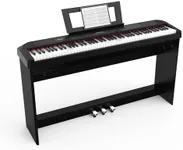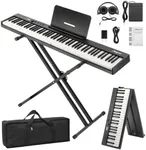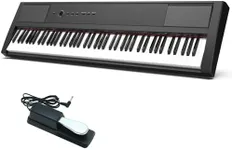Buying Guide for the Best Cheap Piano Keyboards
Choosing the right piano keyboard can be a rewarding experience, especially if you know what to look for. Whether you're a beginner or an experienced player, understanding the key specifications will help you find a keyboard that suits your needs and enhances your playing experience. Here are some important factors to consider when selecting a piano keyboard.Number of KeysThe number of keys on a keyboard is crucial because it determines the range of notes you can play. Standard pianos have 88 keys, but keyboards can have 61, 76, or 88 keys. For beginners or those with limited space, a 61-key keyboard might be sufficient. If you plan to play more complex pieces or want a more authentic piano experience, consider a 76 or 88-key keyboard. Your choice should depend on your playing goals and available space.
Key ActionKey action refers to how the keys respond when pressed. There are three main types: unweighted, semi-weighted, and fully weighted keys. Unweighted keys are lighter and easier to press, making them suitable for beginners. Semi-weighted keys offer a bit more resistance, providing a more piano-like feel. Fully weighted keys mimic the feel of an acoustic piano and are ideal for serious players. Choose based on your experience level and how closely you want your keyboard to feel like a traditional piano.
Touch SensitivityTouch sensitivity means the keyboard can detect how hard or soft you press the keys and adjust the volume accordingly. This feature is important for expressive playing. Keyboards can have no touch sensitivity, single touch sensitivity, or multi-level touch sensitivity. Beginners might start with single touch sensitivity, while more advanced players will benefit from multi-level touch sensitivity for greater dynamic control.
Sound QualitySound quality is determined by the samples used in the keyboard and the quality of the speakers. Higher quality samples and better speakers produce more realistic and pleasing sounds. When evaluating sound quality, listen to the different voices (piano, strings, etc.) and see if they sound natural to you. If possible, try the keyboard in person to judge the sound quality yourself.
PolyphonyPolyphony refers to the number of notes a keyboard can produce at the same time. Basic keyboards might have 32-note polyphony, while more advanced models can have 64, 128, or even higher. Higher polyphony is important if you plan to play complex pieces with sustained notes or use the sustain pedal frequently. For beginners, 32 or 64-note polyphony might be enough, but more advanced players should look for higher polyphony.
PortabilityPortability is an important factor if you need to move your keyboard frequently. Lighter keyboards with fewer keys are easier to transport. Consider the weight and size of the keyboard, especially if you plan to take it to lessons, gigs, or practice sessions outside your home. If portability is a priority, look for a compact and lightweight model.
Additional FeaturesAdditional features like built-in learning tools, recording capabilities, and connectivity options (USB, MIDI) can enhance your playing experience. Built-in learning tools are great for beginners, while recording capabilities allow you to capture your performances. Connectivity options are useful if you want to connect your keyboard to a computer or other devices for music production. Consider which features are important to you based on your playing goals and how you plan to use the keyboard.
